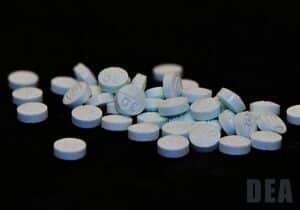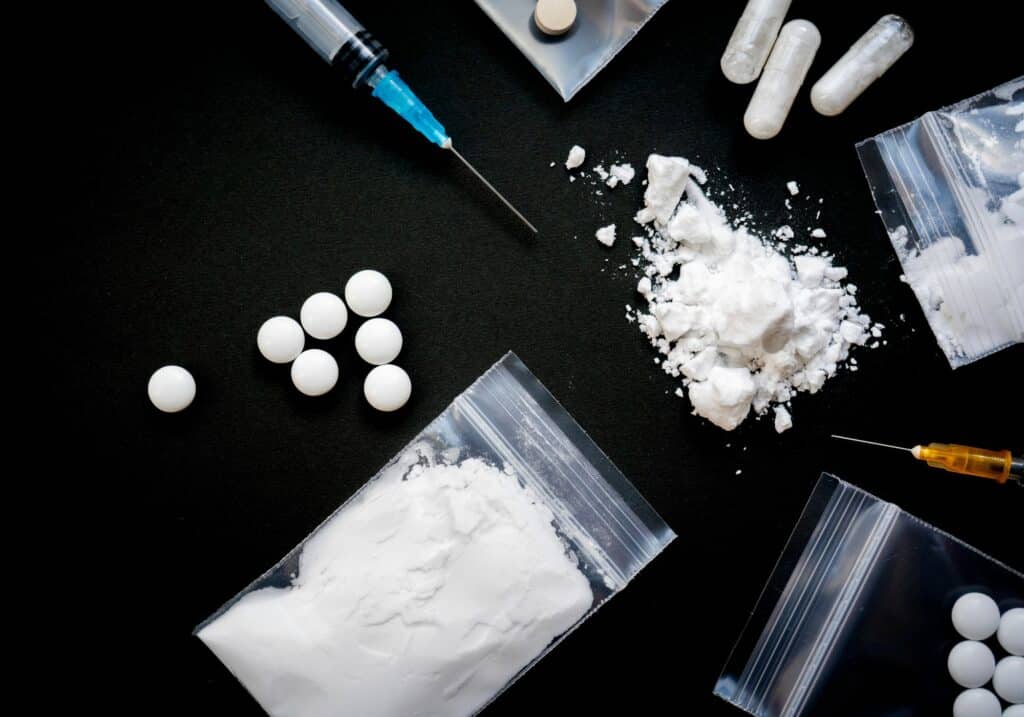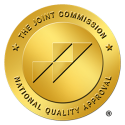What is Polysubstance Use?
Polysubstance use involves the use of various substances—whether they’re illegal drugs, legal substances, or prescription medications—either simultaneously or within a short timeframe. This practice can be deliberate, such as mixing drugs to enhance or counteract the effects of one another, or accidental, like consuming drugs unknowingly mixed with other substances.
Polysubstance abuse is characterized by the unselective mixing of multiple substances to alter the body’s or brain’s functions. This could mean combining alcohol with tobacco, or illicit drugs like heroin with prescription opioids.
The aim of substance abuse is often to achieve a specific sensation, like euphoria, altered perception, or deep relaxation. Polysubstance abuse, therefore, involves consuming more than one drug to experience these effects, potentially intensifying the outcome, using one substance to balance the effects of another, or boosting the effects of each substance used.
Engaging in polysubstance abuse is highly risky and is associated with a desire for amplified effects or to experience the combined impact of different substances. Those who use multiple substances are also more likely to engage in other risky behaviors.
Commonly mixed substances include depressants (such as alcohol and benzodiazepines), stimulants (like ecstasy and cocaine), or a combination of stimulants and depressants (e.g., cocaine and alcohol). Those involved in polysubstance abuse might find themselves dependent on or addicted to one or more of the substances used.
Causes and Risk Factors of Polysubstance Abuse
The challenge of substance use reaches far beyond a single public health issue, especially as many people engage in the use of multiple substances simultaneously.
Research into the trends and widespread nature of substance use has pinpointed several risk factors that elevate the likelihood of developing polysubstance abuse problems. These include:
- Age, with younger individuals more commonly at risk
- Lower educational attainment
- Unemployment status
- Ethnicity, with White individuals showing higher incidences
- Living with a physical or mental disability
- Experiencing anxiety
- Suffering from depression or other mood disorders
- Heavy use of tobacco or alcohol
Furthermore, genetic predispositions, a family history of substance abuse, stress, trauma, and the easy availability of drugs also play significant roles in the onset of polysubstance use.
Dangers of Polysubstance Abuse
The specific consequences of polysubstance misuse vary based on the mix of substances involved, but there are overarching dangers inherent to this practice. Key dangers include:
- Amplified Side Effects: Each drug carries its own set of potential adverse effects. Misusing multiple substances together can magnify these side effects beyond simply the sum of each drug’s effects. The interactions can produce unique and more intense reactions, such as nausea, vomiting, body pain, balance issues, and alterations in heart rate, breathing, and blood pressure.
- Heightened Health Risks: The interaction between different drugs can slow down the body’s metabolism of these substances, leading to higher blood concentrations and increased toxicity. This scenario can result in the creation of new, harmful metabolites as the substances break down. Those who misuse multiple substances face a higher likelihood of developing various diseases and conditions. For instance, chronic conditions like hepatitis C are more prevalent among heavy alcohol users who inject drugs, while tobacco users who also consume cocaine have a greater risk of heart attacks, according to the European Monitoring Centre for Drugs and Drug Addiction (EMCDDA).
- Worsened Mental Health Complications: Individuals with co-occurring disorders—where substance use disorder and another mental health condition coexist—may be more prone to polysubstance misuse. Misusing substances often exacerbates mental health symptoms, and vice versa, the mental health condition can intensify substance misuse. The misuse of multiple substances further escalates these effects, creating a compounded challenge for both treatment and recovery.
What are Some of the Most Commonly Polydrug Abused?
Some substances are more commonly involved in polysubstance abuse, including:
- Alcohol
- Marijuana
- Cocaine
- Methamphetamines
- Heroin
- Synthetic compounds, such as Spice/K2, bath salts, and gravel
- Prescription opioids, including OxyContin, Oxycodone, and Vicodin
- Benzodiazepines like Xanax, Ativan, and Klonopin
- Club drugs, such as MDMA (Molly, Ecstasy)
- Recreational inhalants like “poppers” (amyl nitrate)
- Psychedelics, including LSD and psilocybin mushrooms
The abuse of three or more substances from this list, excluding nicotine and caffeine, constitutes polysubstance abuse.
Teenagers and young adults are particularly susceptible to experimenting with multiple drugs due to challenges in obtaining a consistent drug supply and a natural tendency towards experimentation in search of new highs. Additionally, the pressures and stressors of adolescence often drive this demographic to use drugs as an escape mechanism.
Effects of Combining Specific Substances
Individuals with polysubstance use disorders often mix substances, leading to unique symptom patterns.
Cocaine and Alcohol
This combination is widespread. Alcohol can increase cocaine levels in the body by up to 30%, producing cocaethylene, a compound with prolonged presence in the bloodstream that escalates heart rate and blood pressure, potentially causing cardiovascular issues. Additionally, cocaine might lessen the perceived impact of alcohol, encouraging increased alcohol consumption.
Opioids and Cocaine
These substances have contrasting effects, with opioids depressing and cocaine stimulating the central nervous system. Users might mix them to counterbalance the adverse effects of each. For instance, someone stimulated by cocaine may use opioids to relax or sleep. However, since each can mask the effects of the other, the risk of overdose and complications is heightened.
Opioids and Benzodiazepines
Both are central nervous system depressants; combining them can severely depress respiration, risking fatal overdose. Oxygen deprivation to the brain from this mix can cause permanent damage or death. Older individuals metabolize benzodiazepines more slowly, increasing respiratory complication risks.
A 2014 SAMHSA report highlighted nearly 1 million emergency department visits from 2005 to 2011 involving benzodiazepines alone or mixed with alcohol or opioids, noting a 24-55% increased risk of severe outcomes from such combinations. Fatalities involving benzodiazepine frequently occur when mixed with other substances.
Prescription and Illicit Drugs
Misusing prescription drugs, perceived falsely as safer than illicit ones, carries significant risks. Prescription medications, akin in composition to illicit drugs, can lead to severe health consequences, including death, when misused—whether mixed with alcohol, other prescriptions, or illegal drugs.
Even over-the-counter drugs, like cough medicines containing dextromethorphan (DXM), can produce hallucinations at high doses, while promethazine-codeine cough syrup offers sedative effects. According to NIDA, these are often misused alongside alcohol or marijuana, underscoring the dangers of polysubstance misuse involving any prescription medication.
Polysubstance Abuse Signs and Symptoms
The indicators of polysubstance abuse vary depending on the substances used, often reflecting a pattern of escalating drug use. Research utilizing artificial intelligence and machine learning has identified common pathways of drug use escalation, such as:
- Transition from alcohol, cannabis, and/or opioids to cocaine use
- Progression from benzodiazepine and cocaine to cannabis use
- The sequence from alcohol, cocaine, and cannabis to opioid use
Cocaine is known for boosting mood and energy, whereas benzodiazepines, such as Valium (diazepam) or Xanax (alprazolam), are sedatives typically prescribed for sleep. The mix of different substances leads to varied symptoms of polysubstance abuse.
Physical Symptoms
Those engaged in polysubstance use may exhibit:
- Increasing drug tolerance, requiring more of the substances to achieve the same effects
- Withdrawal symptoms upon cessation, including insomnia and digestive problems
- Injuries from intoxication-related accidents or falls
- Risk of overdose, including life-threatening conditions like respiratory depression from opioids
- Long-term health issues such as liver damage from alcohol, seizures, or chronic pain addiction
Psychological Symptoms
Polysubstance abuse often triggers psychological and mental health changes, including anxiety seen in methamphetamine users—a drug frequently combined with others. Other psychological effects may encompass:
- Noticeable mood fluctuations
- Behavioral changes
- Feelings of anxiety, depression, or withdrawal from social interaction
- Intense cravings and a preoccupation with obtaining and using drugs, altering personal priorities and social interactions
Social and Emotional Indicators
Individuals struggling with polysubstance abuse typically face significant disruptions in their personal and professional lives, including legal and financial difficulties. Like other forms of addiction, these challenges may lead to:
- Neglect of responsibilities
- Strained or failed relationships
- Persistent drug-seeking behavior
- Inability to control or reduce substance use
Awareness of these signs is critical for recognizing polysubstance abuse and seeking timely intervention.
What is Polysubstance Dependence
Substance use disorders emerge from alterations in brain function due to persistent drug use, affecting the neural pathways involved in experiencing pleasure, learning, stress response, decision-making, and self-regulation.
Polysubstance dependence refers to the body’s adaptation to and reliance on a combination of substances for normal functioning, especially observed over a year. Although each substance impacts the brain slightly differently, addictive substances like alcohol, opioids, and cocaine commonly trigger an increase in dopamine levels within the basal ganglia, producing feelings of pleasure.
Causes of Polysubstance Dependence
Continuous substance misuse leads to changes in brain structure and function, termed neuroadaptations. These adaptations impair normal brain operations and facilitate the shift from infrequent, controlled substance use to regular misuse and dependency.
Polysubstance Dependence vs. Polysubstance Abuse
The line between polysubstance abuse and dependence may seem thin but is distinctly defined. Polysubstance abuse involves consuming multiple substances in manners or doses contrary to their intended use, which doesn’t necessarily lead to dependence.
Conversely, polysubstance dependence denotes the chronic use of various substances to the extent that the individual’s brain and body require them for baseline operation. This level of chemical dependency poses significant challenges, as normal brain and bodily functions become compromised without these substances.
Polysubstance Abuse Treatment
Recovering from polysubstance addiction is achievable, yet it demands tailored approaches due to the complexity of dealing with multiple substances. The journey to recovery initiates with a detoxification and withdrawal management phase, which, given the involvement of various substances, might lead to unforeseeable withdrawal symptoms and risks. It’s crucial to select a treatment center experienced in handling the nuances of polysubstance withdrawal.
Following the completion of a medically-supervised detox, the individual progresses to the treatment stage of recovery. Depending on the depth of the polysubstance abuse issue, this phase could span from 3 to 6 months and involves multiple treatment modalities:
- Individual Therapy: Central to recovery, psychotherapy sessions utilize evidence-based approaches such as cognitive behavioral therapy, dialectical behavior therapy, contingency management, and rational emotive behavior therapy to address underlying issues and foster healthy coping mechanisms.
- Medication: For cases involving substances like opioids or alcohol, medication-assisted treatment (MAT) can significantly aid in mitigating relapse risks.
- Group Therapy: Engaging with peers in recovery through group sessions offers valuable support and shared insights, enabling individuals to exchange experiences and challenges.
- Family Therapy: The involvement of family members is vital in the recovery process, with therapy sessions aimed at improving communication, resolving conflicts, and establishing supportive boundaries.
- Holistic Therapy: Incorporating holistic methods such as meditation, yoga, massage, acupuncture, mindfulness, and art therapy can enrich the recovery experience, promoting relaxation and well-being.
At Iris Wellness Group we provide a comprehensive range of care from outpatient detox to various outpatient programs, including intensive outpatient program and partial hospitalization programs in Chattanooga, TN. With our dedicated support and comprehensive treatment approach, overcoming polysubstance abuse is within reach. Embark on your path to recovery and wellness by contacting Iris Wellness Group today.











